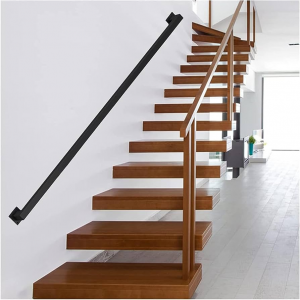The Ultimate Guide to Railing System Handrail Tubes
Handrail tubes are a vital component of any railing system, offering both structural integrity and aesthetic appeal. It could be different materials, surfaces, and shapes.
Handrail tubes, also known as handrails or rail tubes, are components used to form the handrail part of a railing system. They come in various materials, sizes, and finishes, each suited to different needs and preferences. The primary role of handrail tubes is to offer a sturdy and reliable surface for people to hold onto for support and safety while moving up and down stairs or along elevated walkways.
 Features of Handrail Tubes
Features of Handrail Tubes
1. Material Variety:
Handrail tubes can be made from various materials, including stainless steel, aluminum, wood, and PVC. Stainless steel and aluminum are particularly popular due to their durability, corrosion resistance, and modern appearance.
2. Size and Shape:
Handrail tubes come in different diameters and shapes, including round, square, and rectangular profiles. The choice of size and shape depends on the specific requirements of the project and the desired aesthetic.
3. Finishes:
Handrail tubes are available in a range of finishes, such as brushed, polished, powder-coated, and anodized. These finishes not only enhance the visual appeal but also provide additional protection against wear and environmental factors.
4. Customization:
Many handrail tubes can be customized in terms of length, bend, and finish to meet the unique needs of a project. Customization allows for the creation of bespoke railing systems that perfectly fit the design and functional requirements of any space.
Applications of Handrail Tubes
1. Residential Buildings:
In homes, handrail tubes are commonly used for staircases, balconies, and terraces. They provide safety for residents while also contributing to the home’s overall design aesthetic.
2. Commercial Spaces:
In commercial buildings, such as offices, hotels, and retail stores, handrail tubes are essential for ensuring the safety of employees and visitors. They are often used in staircases, escalators, and elevated walkways.
3. Public Infrastructure:
Handrail tubes play a critical role in public infrastructure, including parks, pedestrian bridges, and transportation hubs. They offer the necessary support and safety for large numbers of people navigating these spaces daily.
4. Industrial Settings:
In industrial environments, handrail tubes are used in mezzanines, catwalks, and safety barriers. Their durability and strength are essential for protecting workers in these high-risk areas.
Handrail tubes are an indispensable component of modern railing systems, offering safety, durability, and aesthetic flexibility. Whether you are designing a residential staircase, outfitting a commercial building, or enhancing public infrastructure, the right handrail tubes can make all the difference. By understanding the features, benefits, and applications of these essential elements, you can ensure that your railing system is both functional and visually appealing, providing reliable support and enhancing the overall design of any space.

 +86 159 6420 9667
+86 159 6420 9667  sales@haxrailing.com
sales@haxrailing.com 



